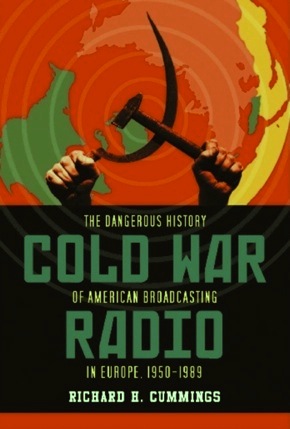 What is the big deal with amateur radio? What is it that you hear? (Part 1)
What is the big deal with amateur radio? What is it that you hear? (Part 1)

Shortwave radio has been a source for great sci-fi plots, spy intrigue novels, movies, and so on, since radio first became a “thing.” But, what is the big deal, really? What is it that amateur radio operators listen to?
In this video, I share some of the types of signals one might hear on the high frequencies (also known as shortwave or HF bands). This is the first video in an on-going series introducing amateur radio to the interested hobbyist, prepper, and informed citizen.
I often am asked by preppers, makers, and other hobbyists, who’ve not yet been introduced to the world of amateur radio and shortwave radio: “Just what do you amateur radio operators hear, on the amateur radio shortwave bands?”
To begin answering that question, I’ve taken a few moments on video, to share from my perspective, a bit about this shortwave radio thing:
Link to video: https://youtu.be/pIVesUzNP2U — please share with your non-ham friends.
From my shortwave website:
Shortwave Radio Listening — listen to the World on a radio, wherever you might be. Shortwave Radio is similar to the local AM Broadcast Band on Mediumwave (MW) that you can hear on a regular “AM Radio” receiver, except that shortwave signals travel globally, depending on the time of day, time of year, and space weather conditions.
The International Shortwave Broadcasters transmit their signals in various bands of shortwave radio spectrum, found in the 2.3 MHz to 30.0 MHz range. You might think that you need expensive equipment to receive these international broadcasts, but you don’t! Unlike new Satellite services, Shortwave Radio (which has been around since the beginning of the radio era) can work anywhere with very affordable radio equipment. All that you need to hear these signals from around the World is a radio which can receive frequencies in the shortwave bands. Such radios can be very affordable. Of course, you get what you pay for; if you find that this hobby sparks your interest, you might consider more advanced radio equipment. But you would be surprised by how much you can hear with entry-level shortwave receivers. (You’ll see some of these radios on this page).
You do not need a special antenna, though the better the antenna used, the better you can hear weaker stations. You can use the telescopic antenna found on many of the portable shortwave radios now available. However, for reception of more exotic international broadcasts, you should attach a length of wire to your radio’s antenna or antenna jack.













Interesting sir. You did good. I got my codeless tech in October 1993 and in February 1994 I got broke in when we got hit by an ice storm. All I had was an ICOM 02-AT handy talkie. I spent the first night out side our local power company relaying messages from trucks in the field to the powers that be inside the warm office building. The next three nights were spent at the county EMA office setting by the outside door with a Copper J-pole stuck in the mud on a small hill and RG-58 running to my ht. Had a ball for an old fart. Keep up the good work.
Very nice video. I’ve been a ham for over 2 years now and I also listen to some short wave radio
73
Outstanding, OM!! Great introduction & I too was a short-wave listener before becoming a ham in 1976! Now an extra class licensee & still going strong.
Keep up the great work!!
73,
John
WB5PDZ
Started as WB2MEQ in’62 work and travel caused a break in com’s. Back in 5 yrs ago and active.
great video! just learning, great intro!